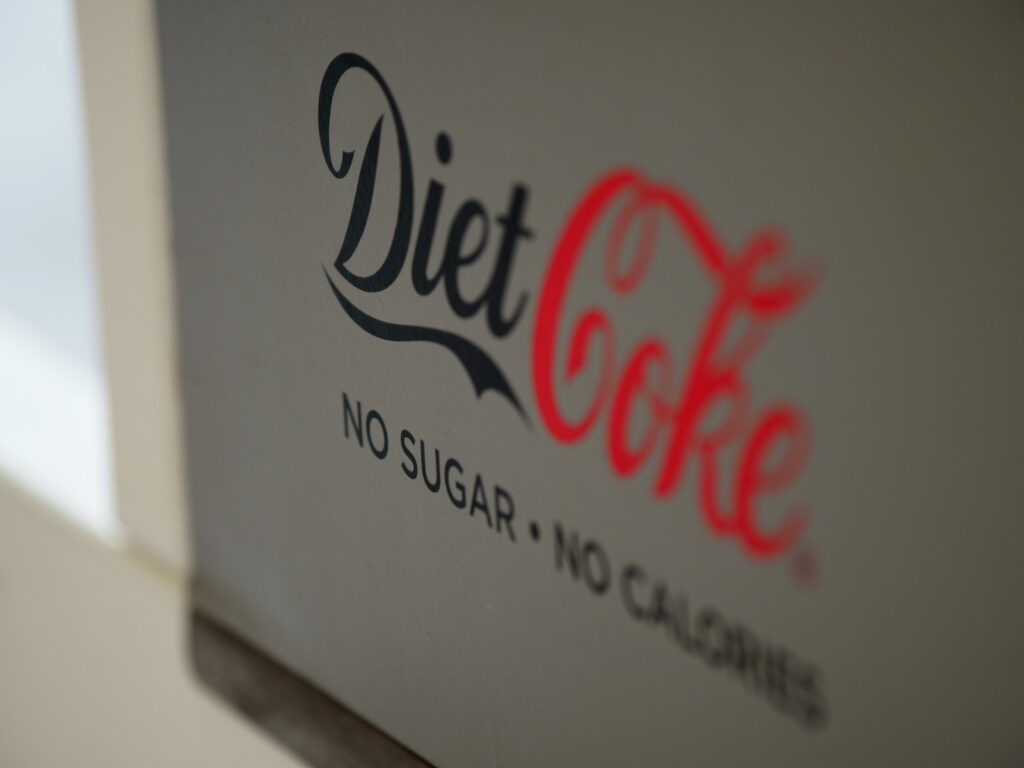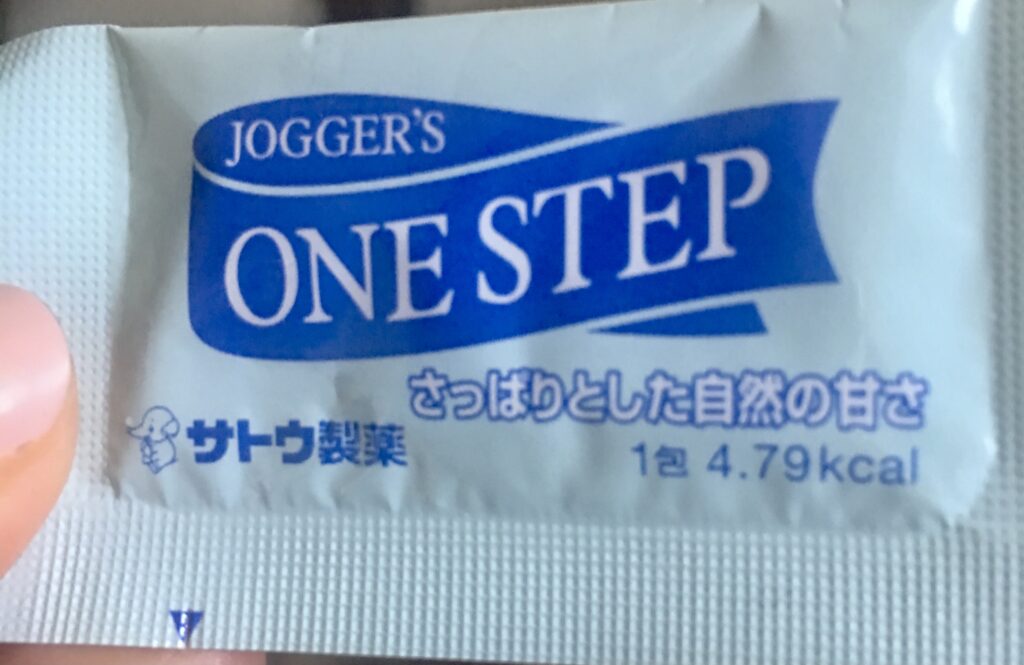”So whether you eat or drink or whatever you do, do it all for the glory of God.”–1 Corinthians 10:31
“If you never taste the bitter, the sweet just isn’t as sweet.” – Cameron Crowe, Vanilla Sky
My latest Netflix binge show is “Money Explained.” I’m already hooked from Episode 1, because I am a documentary nerd and I love Tiffany Hadish, especially the sound of her voice (she narrates the series). The first episode talks about get rich quick schemes and how they have evolved over 200 years. It highlights various examples of ponzi schemes and pyramid schemes, and scams, like the Nigerian prince letters and then emails. What I found really fascinating was that many of the schemes are actually not technically fraud, They are legal. No one can be prosecuted if it backfires on the person who invested all of their money. No matter if they are fraudulent or not, all have one thing in common: they start with a “fantastic promise.” A promise of doubling or tripling your current salary, of getting rich while only working a few hours a week, of never having to worry about money again. The experts on the program talked about what gets people hooked – it’s a dopamine hit. The thrill of possibly having it all at very little cost. Except there’s usually a catch. Fine print with a fee. And in the end, it’s too good to be true.
You’re just too good to be true
And that got me thinking about the zero sugar fantastic promise. And get thin quick schemes. The “fantastic promise” of all of these products, including artificial sweeteners and products containing them, is that you can eat decadent food without having to “pay” much in calories. Some of these products even promise that they are completely natural, organic and vegan or “plant-based”. And for the same thrill of a dopamine hit you get when you taste that first sweet bite, you can have that without the carbs, calories, and the devil incarnate we now know as sugar.
Just like many of the ideas in the Money Explained show, many of these products may technically “legit,” as far as applicable regulations are concerned. But the biochemistry of our bodies and how they react to all “sugars” blurs all the lines and throws off our natural response to sugar and calories. Eventually, the brain catches up to the fact that it’s not getting real food. The consequences of this gaslighting constitute that “fee” I mentioned earlier -we could end up paying the price with sugar addiction, weight gain, and other unintended consequences.
The evolution of no-sugar sugars
Sugar substitutes have evolved over the past 30 years both from a brainding and technology standpoint. In the 80s, we had Sweet and Low and desktop computers; now we have iPads and stevia. Then Equal started popping in the 90s, and Splenda was the 2000s showstopper.
Many of our everyday consumables are advertised as “no sugar” or “no calories” to promote a sense of virtue and well-being. By buying the product, you are buying the “fantastic promise” that you can consume a food or drink which is typically regarded as unhealthy but not sugar the unhealthy effects or ruin your keto diet. Let’s take a typical favorite example and my former 11am drink: Diet Coke.
Carbonated water, caramel color, aspartame, Phosphoric acid, potassium benzoate, natural flavors, citric acid, caffeine

Aspartame and caramel color are the main flavors in Diet Coke. Aspartame is a famous artificial sweetener that you will also find in more sugarless gums. Caramel color you find not just in drinks but in many kinds of cereals. It’s also one of the reasons that soda, just like coffee is notorious for staining your teeth.
“Maltitol” is another common artificial sweetener. This is almost in all sugar-free chewing gum and candy, like sugar free gummy bears. There is also “xylitol” which is advertised as “dentist friendly” and is an ingredient in many whitening snack products like gum. Both of these incidentally will kill dogs on the spot. One nice benefit of giving up this stuff was that I didn’t have to be paranoid that I had accidentally dropped a piece of candy or gum on the floor where my dog would surely eat it.
Sucralose, another common ingredient in zero calorie energy and fruity fizzy drinks, is an artificial sweetener and the main ingredient in Splenda.
The sugar substitutes of the modern age: Stevia and Monk Fruit
In the 2010s, Stevia became the A-list sweetener because it is not “artificial” and “plant-based.” In its purest form, this is true. Stevia comes from a plant, actually a shrub, and is 200 to 300 times as sweet as sugar.
.And then monk fruit, even sweeter than stevia, showed up and became a way for us to enjoy sugar-free cheesecake again. Monk fruit, also known as lo han guo, is a small fruit native to southern China. The fruit extract, or juice, contains zero calories per serving.
Can we really have our cake and eat it too?
Doesn’t this sound perfect? I thought so. Until I realized that both of these sweeteners don’t just get plucked from a plant in China and Brazil or handed to me. First of all, if you look at most products with Stevia or Monk Fruit, they often also come with Erythritol, which is a type of sugar ALCOHOL that is often combined with other artificial sweeteners or Stevia to enhance the flavors. If you actually go and buy large bags of Stevia, or Monk Fruit, you will usually see Erythritol listed as an ingredient.
Case in point: The Quest bar. Once only available in health chains like GNC, you can now find Quest bars in all mainstream grocery stores, convenient stores, pharmacies, and anywhere you can buy food basically. They are packaged in such an attractive way, with tempting flavors like blueberry muffin, cookies and cream, mint chocolate chip, maple waffle, strawberry cheesecake, and chocolate chip cookie dough.
The Quest bar seems like the perfect way to have your cakes, brownies, and cookies, and eat them too. Quest bars come in all kinds of sweet no-sugar sugar flavors” bHere are the ingredients in a typical Quest bar:
Protein Blend (Milk Protein Isolate, Whey Protein Isolate), Soluble Corn Fiber, Almonds, Water, Unsweetened Chocolate, Erythritol, Natural Flavors, Cocoa Butter. Contains Less Than 2% of the Following: Sea Salt, Sunflower Lecithin, Stevia Sweetener, Sucralose.
See? Stevia, Sucralose, and Erythritol. The three amigos that make it possible for the label to say it only has 1 gram of sugar.
Another example are these keto “chocolate chip cookies” from a website that makes nothing but sugar free donuts, bagels, cookies, and brownies You can also buy and make your own mixes. Here are the ingredients for the cookies:
Almond flour, egg, erythritol, no sugar added dark chocolate chips (unsweetened chocolate, erythritol, cocoa butter, stevia extract, sunflower lecithin), vanilla bean, alcohol.
I see again it has erythritol, way before it lists stevia. You will remember from my post on reading labels that ingredients are listed in descending order of amount. So whatever is more, is listed first. And in both cases, stevia’s super low on the list. Not to mention, if you look closely, only the chocolate chips have stevia – the rest has all artificial sweeteners and sugar alcohols.
So you might say, you can make the recipes with just pure stevia or monk fruit and then forget the sugar alcohols. That was my approach. I was a label monger, only buying products with either only stevia or monk fruit sweeteners, or pure stevia or monk fruit extract for my coffee.

My sweet no-consequences world
For about 2 years, I probably ate no actual sugar. Even though technically I was not eating real sugar, I was eating more dessert type of foods I would normally not want to eat on a daily basis.
The combination of a bear market of recipes/product and the mentality that “sugar is bad” led me to this shangri-la existence of eating healthy whole foods and eating all the “desserts” I wanted. I regularly indulged in no-sugar chocolate bars, cookies, and candy, as long as they only had stevia, monk fruit, and did not have any “artificial sweeteners” or sugar alcohols. This was under the rationale that these were plant-based and “natural,” and that they would not raise blood sugar like the other types of sugar substitutes. In fact, there are medical health articles touting stevia and monk fruit as good sugar substitutes for diabetics because of their minimal impact on glucose levels. I was using copious amounts of stevia and monk fruit in my drinks,snacks, and homemade salad dressings. I was still ordering my lattes at Starbucks with two packets of stevia. I was making my own matcha green tea latte with monk fruit sweetener. I was putting vanilla stevia in my greek yogurt for my dessert after dinner.
Like all things too good to be true, there is a catch. I couldn’t stop thinking about sugar. So I started to reach for fruit when I had that craving, which did not go away after my sugar free cookie dough. Even the ripest strawberries started to taste like cardboard. I would end up sprinkling stevia on my berries, yogurt, and cereals, adding it to pasta sauce, using it to make salad dressing, you name it. I would have to use more and more of the products to get any kind of sweet taste from food.
I also always felt puffy and bloated, and didn’t feel good wearing clothing that clung around my stomach because of the bloat. Lastly I felt like I was ingesting a lot of food engineered in a lab. All of this collective “gross” feeling led me to really question my approach and underlying core beliefs.

The sneaky no-sugar sugar paradox : What’s the catch?
Though I thought that natural no-sugar substitutes are the ultimate loophole, the fact that I was ingesting products 200-400 times sweeter than sugar was ultimately gaslighting my biological system and messing with my head. Here is an explanation of exactly the effect artificial sweeteners and sugar substitutes were having on me, backed by third-party research and writing on the topic:
Catch #1 – It’s still refined chemicals
More often, despite the product’s claims, we are NOT getting something natural or plant-based. You are getting something 200-400 times sweeter than sugar that’s engineered in a lab. EVen products advertised as stevia, like Stevia In The Raw and Truvia, may be “stevia-based” but either actually includes sugar or artificial sweeteners. The stevia may actually come from a plant, but the white powder you bring home is highly refined. In fact, the FDA has never approved “straight from the plant” stevia.
The gastro issies I described earlier? It’s because we can’t break down the “non sugar” in the same way that we would normally process actual sugar. The liver and the rest of the body know what to do with glucose – but not the no-sugar stuff. So that’s why you may notice feeling uncomfortable and bloated after chewing a lot of sugarless gum or eating protein bars.
Catch #2 – The brain will retaliate for being gaslighted and take it out on the body
My tongue may have tasted sweetness, but digestion is a process that only begins in the mouth. A lot happens after you swallow that first bite with the brain and the body. Once tongue taste receptors detect sweetness, the brain acts as if it is getting something sweet, and prepares the body by releasing insulin. When the food makes it to your intestines, the body can’t tell the difference between the real sugar and any substitute, including stevia. So the brain gets confused about whether it’s getting sugar, and communicates to the pancreas to secrete insulin, which is there to break down the sugar. Without any calories or real sugar to absorb the insulin, the brain figures out it’s not getting real food and responds by producing even more insulin. As a result, there is all this extra insulin hanging around, which research shows can lead to insulin resistance. And insulin resistance is a place you don’t want to be in. This causes all kinds of problems for the body, including throwing off all of our internal checks and balances, increasing the chances for weight gain, diabetes, and cholesterol issues.
The “tricky taste bud” and resulting gut problem, is exacerbated by products adding insoluble “fibers” to dilute any sugar that does exist in them. Prime example: Smart Sweets has exploded in the marketplace in the last year or so, going from existing only in GNC or specialty grocery stores to pharmacies and convenience stores. These for those of you who may have missed it are intended for the candy gummy crowd. I for one get it – I love my gummy peach rings and swedish fish. And they have BOTH. But as usual, there is a catch. For example, in one 100 calorie bag of the Peach Ring gummies, there are 13 grams of fiber, which is over half the recommended daily amount of 25 for women. This “fiber” consists of non-soluble corn fiber, and “plant-based” chicory root and tapioca fibers. The bag says that it’s got only 3g of sugar, but there are 42 grams of carbs? So where did all the other carbs go? What I found out is that these “plant based fibers,” including chicory root and tapioca fiber, act more like a carbohydrate, which can lead to blood sugar spikes and weight gain. In fact, if you read the package, you won’t see tapioca fiber separately listed anymore, because, many of these manufacturers were required to stop using tapioca fiber as an ingredient because it is misleading, and instead have to use isomolto-oligosaccharides (sometimes written in short hand as IMO), because it does not technically fall into a category of fiber anymore. And that’s listed as the third ingredient on the bag, after the corn fiber and allulose, which is – you guessed it – ANOTHER type of sugar.
Catch #3: The Bitter taste of victory?
Unknowingly, I had become totally desensitized to the pure sweetness of real food. One side effect of artificial sweeteners on the brain and taste is they can change how we taste food. As this article with insight from a Harvard obesity specialist explains, a really small amount of sugar substitute produces a sweet taste comparable to that of a much higher volume of sugar, without comparable calories. That will limit tolerance for other foods, like fruit and vegetables. Even though a small amount will can have this effect, after time it will take more and more of the sweetener to get the desired “hit”. Meaning for me, I was dumping 3-4 tablespoons of stevia into my morning coffees and quickly replacing gum that had lost its flavor with a fresh piece.
In other words, regular consumption of artificial sweeteners can detract the taste buds from healthy and nutritious foods.Try chewing a piece of sugar-free gum then eating some fruit to see what I mean.
Catch #4: I still had cravings, and was prone to overcompensate with healthy foods
I was setting myself up for engaging in compensatory eating behavior because I was not getting what your brain craves. Why do you see some people drink six diet cokes a day? It’s because of this “compensating behavior” when it comes to sweets—persuading ourselves, for example, that the calories we’re saving by drinking diet sodas ‘allow us’ more room for dessert. So in the end we may actually continue to eat the same total number of calories (or even more) on average.
As I have explained in my sedentary athlete article, compensatory eating of healthy foods can backfire. Calories are still calories, and too much of them can cause weight gain. As Jillian Micahaels explains in this video, even if you are eating “clean” or “healthy”, this does not make it ok to eat unchecked portions. And depriving the body of naturally good-tasting foods and the occasional treat will definitely lend to that vulnerable situation.
A clean break
A few weeks ago, I decided as an experiment for the sake of the blog to finally chuck my “no sugar” products. I felt like an alcoholic dumping all their wine bottles or a smoker throwing all their cigarettes in the toilet. It wasn’t too far from the truth though – I was an addict, and I experienced withdrawal.
Cutting out all no-sugar sweeteners was harder than I thought, even logistically. Looking at even simple everyday foods like yogurt, sauces, salad dressing, oatmeals, cereals, and nut butters, you will find that many of them have some type of “no sugar sweetener” including stevia, monk fruit, xylitol or sucralose. This is really common in many products advertised as “no sugar added.” Instead of sugar, they add a sugar substitute. Even superfood green powders and protein powders are often sweetened with stevia or monk fruit, and often labeled as “all natural.”
Instead of sweetening my coffee and tea with stevia, I used honey. I have a supply of dates, goji berries, figs, and strawberries around at all times. 1-2 times a week I have a dessert treat as my “20.” (you can read about the DAO 80/20 approach here). And this is whatever I want it to be – candy, cookies, cake. I found though that just a few gummy bears or half of one of those big cookies is enough to give me that sweet satisfaction. And the less these foods are “forbidden” to me, the more discerning I am. I use the “maybe later” methodology. That cake looks good, but maybe later. More often than not, I forget about the later.
Findings
I can report the following as a result of my 3-week “no sugar sugar” detox:
- I am eating more whole foods. Because I cannot get sweetness from stevia or other types of sweeteners,I am now a fruit fanatic. Strawberries and pineapples are at the top of my list. I even ensured that the occasional protein powder I drink as a supplement is not sweetened with Stevia, but has actual coconut sugar in it.
- My sense of taste and even smell have gotten better. I can taste the natural sweetness in fruits, which now taste like candy. Moreso, I realized my taste buds had gotten so “brainwashed” I actually thought the lab food tasted like a dessert. Out of curiosity, I found a stash of my “no sugar” chocolate and had a bite, then immediately had to spit it out. It tasted so gross! It’s amazing how your body can be retrained in just a few short weeks.
- Oddly enough, I have less of a need to consider sugar substitutes becauseI have less sugar cravings: I am not as interested in the cookies I walk by in the bakery or the candy aisle at Walgreens. If I want something sweet and candy like, say after lunch or with a coffee, I will have Medjool date (they are in fact “nature’s candy.” )
- I have a happier gut. I definitely have less bloating and less of a constant upset stomach. This alone makes it worth it.
- I am not so fixated on being “anti-sugar”. Our bodies NEED glucose to survive. As long as my calories and macros are right, It is easy to budget in an occasional “20” treat even if it has sugar. And when I do that, I don’t settle for some chalky protein bar or weird dry cookie. I have the chewiest, gooey cookie I can find, or a properly baked pastry from a cafe.
One more thought: This is a very controversial topic with lots of different opinions. You can find a lot of material contending that plant based sweeteners are healthier in the long run and won’t impact blood sugar. You can find medical news articles saying that they may be safe for diabetics, or even testimony from diabetics themselves. There are probably an unthinkable number of fitness instagrams of the latest keto doughnuts and how awesome they are for ensuring a six pack. My goal was to provide my experience to leave you to think about what you are putting in your body and what core beliefs that reveals.
The Safest Artificial Sweetener: Does it Really Exist?
The Truth on Artificial Sweeteners: Zero Sugar at a Bitter Cost.











